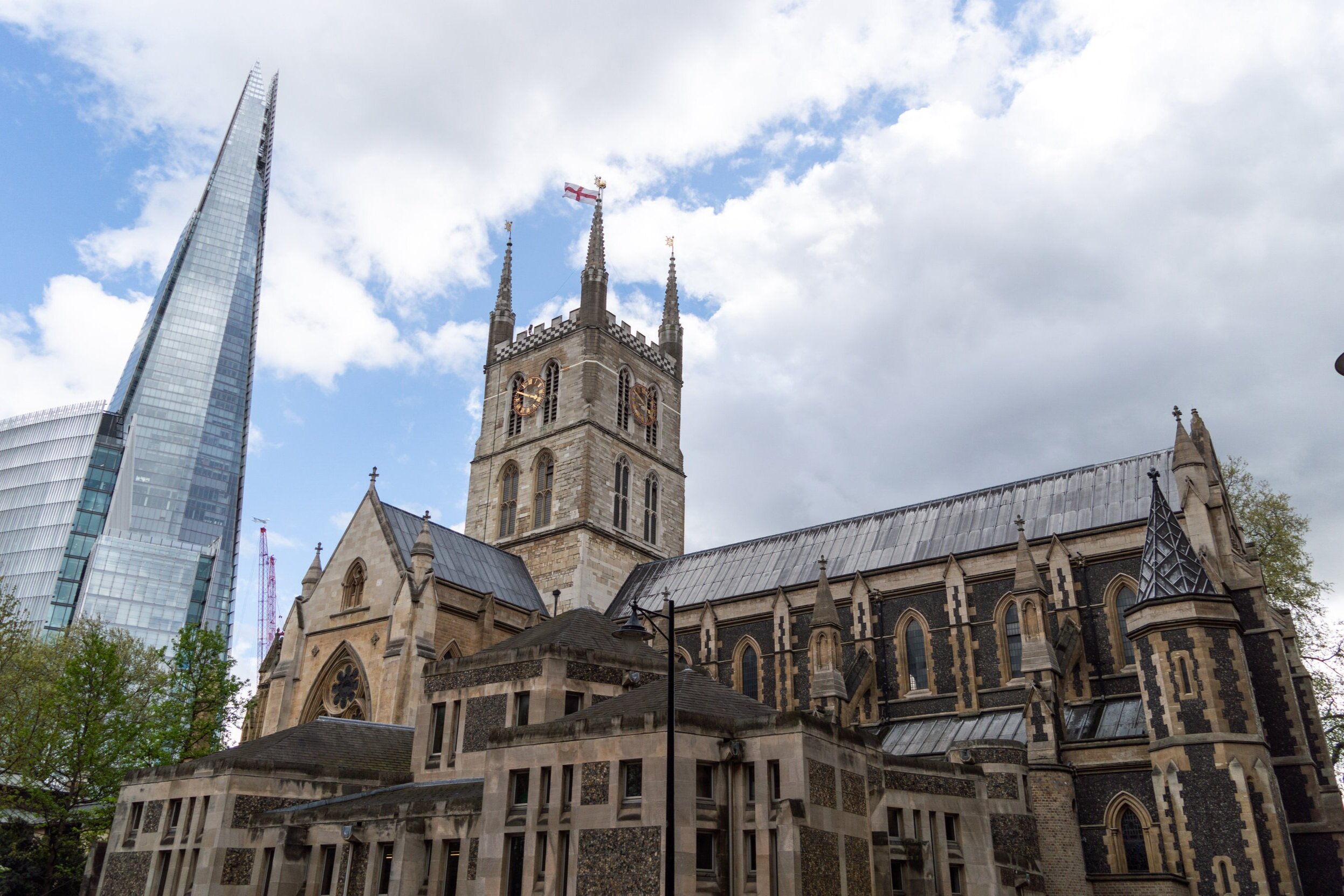Conservation and volunteering at Southwark Cathedral
Southwark Cathedral and The Shard credit: Tristan Surtel/Wikimedia Commons, licensed under the Creative Commons Attribution-Share Alike 4.0 International license.
Trusted Conservators network conservator Katy Lithgow recently attended her first Fabric Advisory Committee (FAC) meeting at Southwark Cathedral, succeeding longstanding committee member, and former parishioner, Gillian Lewis.
Southwark Cathedral (https://cathedral.southwark.anglican.org/) is an historic oasis in a busy site of urban development around London Bridge and the Shard, surrounded by cafes and restaurants, now beginning to buzz again as lockdown eases. This soaring and contemplative space houses many historic features including monuments to significant and lesser known former parishioners, such as John Gower, C14th poet, friend of Chaucer, and author of Confessio Amantis; William Shakespeare (in the company of many theatrical colleagues); and the C17th Dr Lionel Lockyer, (in)famous for his universally effective pills extracted from the sun’s rays.
Combining pastoral work with the duties of heritage custodian means the Church calls upon the volunteer services of many heritage professionals in its governance. FACs advise on priorities, approaches and standards of work affecting historic fabric and collections.
This first face to face meeting since lockdown showed FAC members the conservation projects completed and underway since the last face to face meeting 18 months ago. It is fantastic that such critical treatment has continued during the pandemic.
One such project was the recent conservation by Skillington Workshop (http://www.skillingtons.co.uk/), led by Dr David Carrington ACR, of the Prior’s Doorway and adjacent stoup. These are important survivals of the 1106 Priory incorporated in the current building. Cleaning and consolidation have been sensitively carried out to remove disfiguring and damaging sooty sulphation and repair the fragile stonework. Chiefly Caen stone, a fine grained limestone popular since it was introduced by the Normans, although some types caused problems in the polluted atmosphere accompanying C19th construction, it includes Taynton stone (an Oxfordshire oolitic limestone recorded as being quarried in Doomsday) and Reigate stone, notorious for failure since at least the C15th and condemned by Sir Christopher Wren. The same soft ‘freestone’ properties that make this sandstone so attractive to carvers render it very vulnerable to pollution and water-based deterioration, often made worse by later cement-based repairs and building work. Widely used in the medieval period in the south east, including many London palaces and cathedrals, Reigate stone’s deterioration has been comprehensively studied by HRP in collaboration with Oxford (https://heritagesciencejournal.springeropen.com/articles/10.1186/s40494-020-00424-w) as has the deterioration of Caen stone (https://www.tandfonline.com/doi/abs/10.1080/13556207.2008.10785030).
Priors Doorway, C12th capitals, columns and bases after conservation completed in March 2021 by Skillingtons Workshop, by kind permission of Southwark Cathedral/Jackie Hall
Southwark’s physical survival today is due to comprehensive C19th repairs and rebuilding using these well-intentioned materials. Cement forms the adjacent floor and embeds the Victorian flint knapped facing on the walls seen beside the capitals, which also replaced the crumbling façade, and was also used in the Victorian reconstruction of the nave. But cement leaves a legacy of salt efflorescence, powdering and surface loss that will continue to be a risk and require careful conservation maintenance and repair.
Public access to view the Prior’s Doorway is currently limited by double doors which lead to the adjacent Vestry, coincidentally also protecting the fragile carvings from wear and tear. So ways of improving access are bound to be a subject to which the FAC will return….
Post created by Katy Lithgow 28 June 2021



